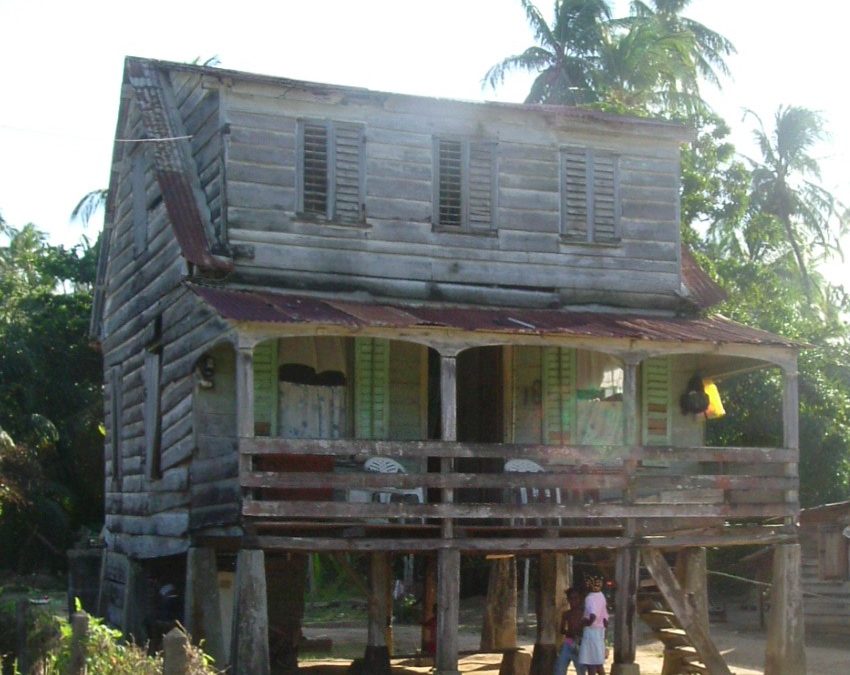
Coronie.
On the way to new Nickerie you pass Coronie, the Surinamese coconut district, the district that used to be especially important because of the coconut palms and related products. Bee honey can also be found there. On arrival on the west bank of the Coppename River, you will be welcomed by a sign that reads: Welcome to the district of Coronie, Peaceful, Free and Friendly. This description certainly applies to the lovely Coronie. Hardly three thousand people live in colorful wooden houses, hidden between the tall palm trees along the East-West connection.
Coronie was only popular with Europeans late. The first activity started with the Scot A. Cameron, who founded the cotton plantation Burnside. Most of the place names in this district still remind of the time of the English protectorate (1799-1816). The region had only a short flowering period. Revenues from the cultivation of cocoa, cotton and cane sugar soon fell due to the fierce competition from abroad. Slave rebellions at the beginning of the 19th century, under the influence of the neighboring country of British Guiana where slavery had already been abolished, left the lantern system at bay.
After the abolition of slavery in 1863, the plantation owners left. The backward population of ex-slaves successfully started growing coconut. The tall palm trees appeared to thrive in the vicinity of the sea. The coconut production has decreased due to the disease and the age of the trees. In addition, coconut oil has become obsolete. The coconuts now partly serve as feed for pigs. Many small farmers have been unable to survive economically, more than half of the population has left for Paramaribo. About 25 kilometers after the bridge over the Coppename River, the flat empty landscape changes into a palm garden and civilization begins. The houses are grouped together in the shade of tall palm trees on the former plantations. The first villages are Ingikondre and Mary’s Hope.
The fact that the mission was strongly present in this region is evident from the wooden churches that are rich in both towns. Incidentally, almost all houses are made of wood, on neuten (poles) and in a varying state of maintenance, with bell gables, bay windows and in all possible architectural styles. The ‘Maria Immaculate Conception’ church from 1892 is striking. The Roman Catholic mission has been going on for years. fight against the decay of this large wooden church. The impossible design, entirely of wood, is by Father Harmes, the same ‘master builder’ who dared to build a wooden cathedral in Paramaribo.
In an earlier renovation, five meters were removed from the nine-meter-high spire, and the roof of flammable walaba wood was replaced by zinc plate. The interior of the church has remained intact, complete with the cloister on panels along the walls. Every Sunday at 08:00 there is a service for which every now and then a real priest comes from the city. Diagonally opposite the church there is a path to the ‘Coronie beach’. A landlock, an ongoing threat to the district, has seen the sand disappear over the years and the beach become a mud bank. In the western part of Coronie a dike has been built against the rising water, which is worth a visit.
